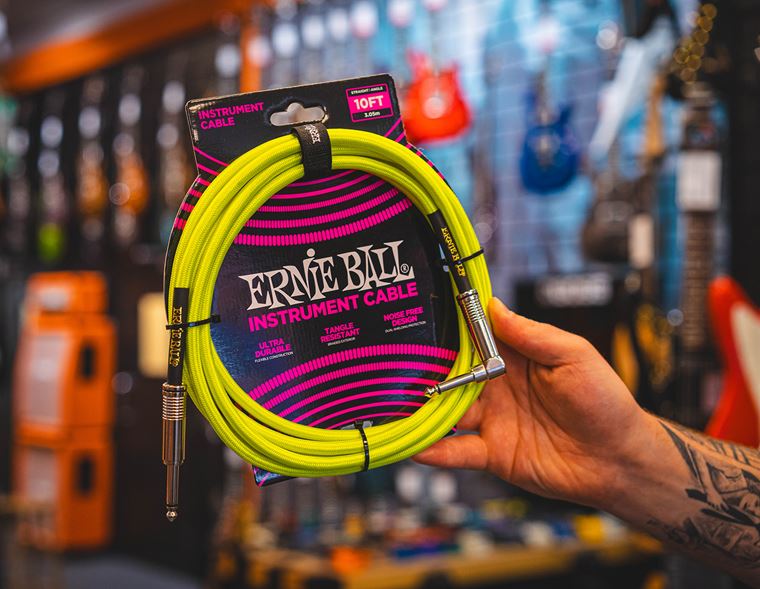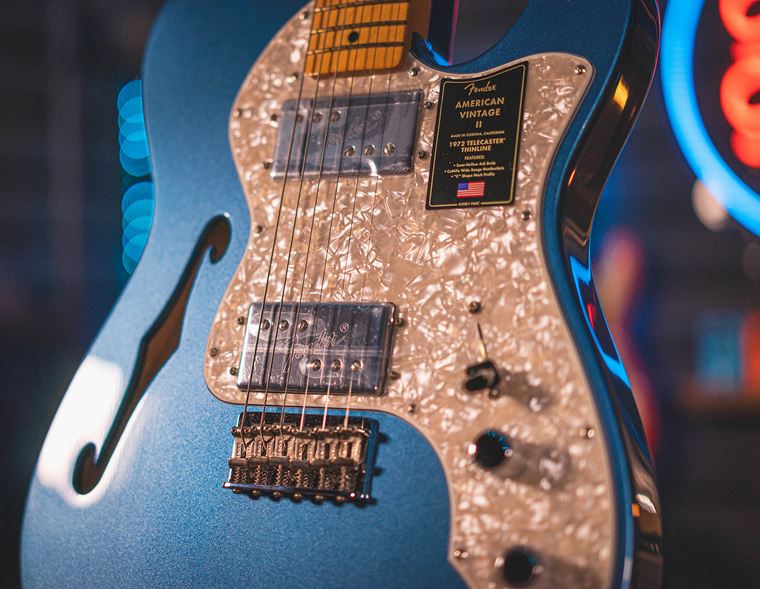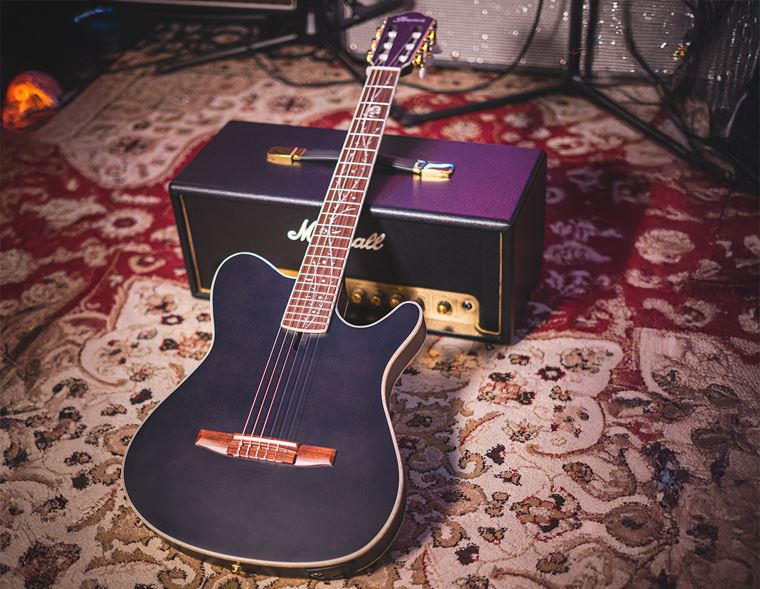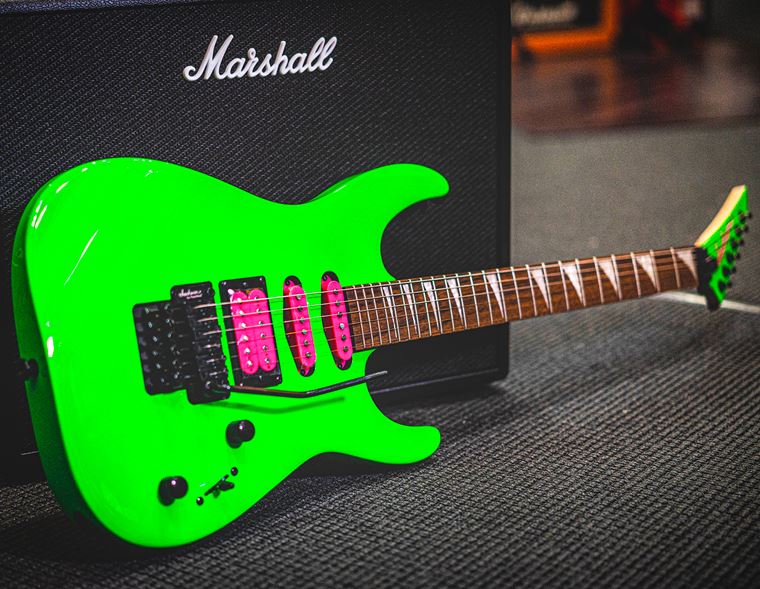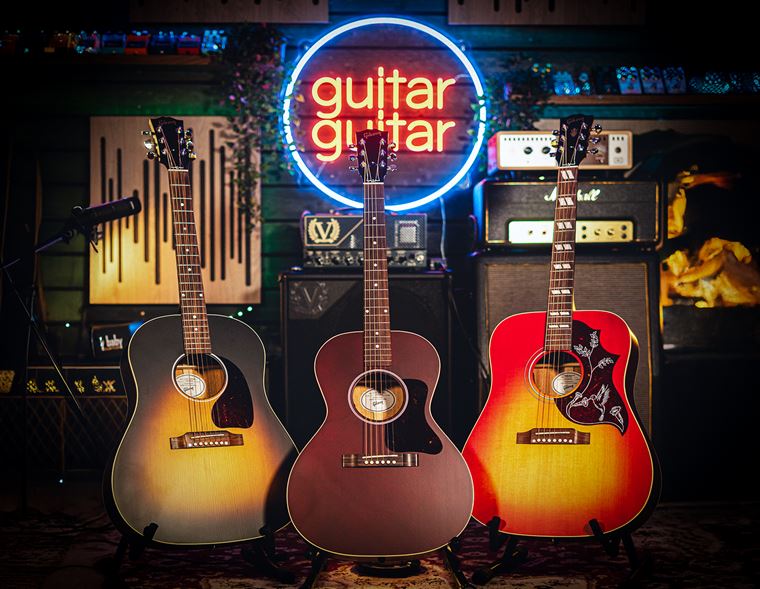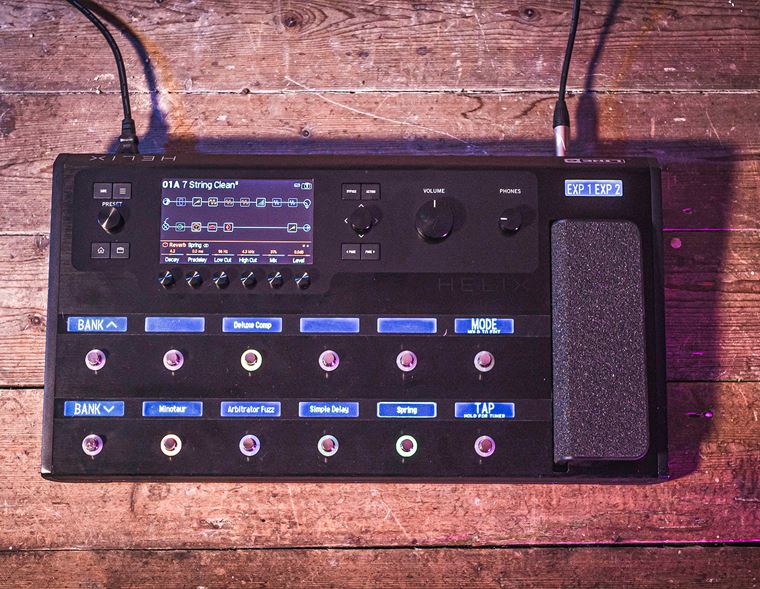7 Tips On How to Plan a Guitar Practice Routine
It’s time for us to talk about practising guitar. Not playing, not ‘widdling’ but straight up, honest practising. We all need to do it, no matter how advanced we are on our chosen instrument. Those who do not regularly incorporate practise into their playing life are doomed to sound stagnant and worn out. Don’t be that player! Create - and make use of - a practice regime and you’ll always be charging ahead as a player. You’ll play better, smarter and you’ll be a more interesting guitarist.
Well, that’s all fine but it’s easier said than done, right? As players, we all tend to lean on the stuff we can already do: it makes us feel better because it’s stuff we can already accomplish to a pretty high standard. This feeds our need for a psychological reward in ways that practising doesn’t, at least until we’ve got the new piece learned. Then of course, the reward is even greater, but that goal requires a little more from us in order to even commit to it from the off.
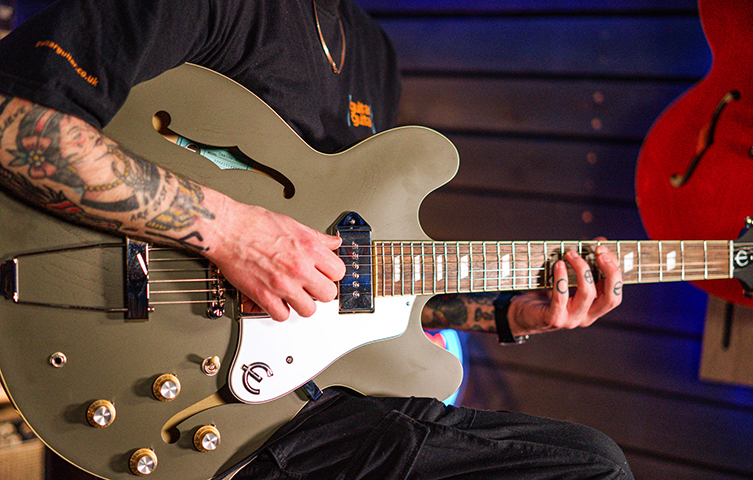
This brings us to today’s blog. Our aim, in clear, easy steps, is to put together an easy practise regime for you, that you can use and stick to. It’s a frame that you can use to put around whichever piece of music you’re trying to learn, and it’ll hopefully give you a good reference/example to employ again and again during your practice time.
What this isn’t is a list of fretboard exercises to learn. We don’t think that’s particularly useful to anyone, given that we all want to play different things! Instead, we want to lay out the steps you might take in order to begin some good habits and start off a practice regime that will last. Consistency and realistic expectations will be our friends today. The goal is not to arrive anywhere but to travel as well as possible, if you get us.
We have seven steps for you to follow today. So, are you with us? Good, then let’s do this!
1. Plan Ahead
Whilst it is never a bad decision to spontaneously pick up a guitar and get playing, some foresight and forward planning could be what makes the most difference between an idle strum and a worthwhile learning experience.
What is it you actually want to achieve? In fact, here’s a better question: what do you tend to avoid when playing guitar? What are the blind spots in your technique or repertoire? Are you a shredder who never uses sweep-picking, for example? Are you a country player who shies away from full-on chicken pickin’? If this sounds like you - whether our particular examples fit or not - then you already know where you should be focussing your efforts!

Okay, that’s half the battle here. The other thing to nail down is when you’re going to practise. Which days, and which time of day? What works for you? As soon as you get home from work? Just after dinner? First thing in the morning? Think through these variables and one will most certainly stand out for you as being the most approachable. That’s the one to go for! Can you do it every day? If not, how often can you do it? Aim for regularity; aim for this to become habitual, to the extent that you look forward to it and feel weird if you miss it! That’s when the dedication takes care of itself! SPoradic sessions that take place at various times will not embed themselves as habits for you, so try to be consistent with times.
2. Organise Your Space
Where are you going to be doing your practice? Do you have a dedicated space in your home that has your guitar and amp nearby? If so, make sure you can get physically comfortable there (Robert Fripp has lots of great things to say about this in his Guitar Craft book), that everything you need is reachable and that all distractions are kept to a minimum. Practising in front of the TV is not what we have in mind here, folks! This is sacred time between you and your instrument, so you’ll want to dedicate all of your energies in that direction. Why compromise?
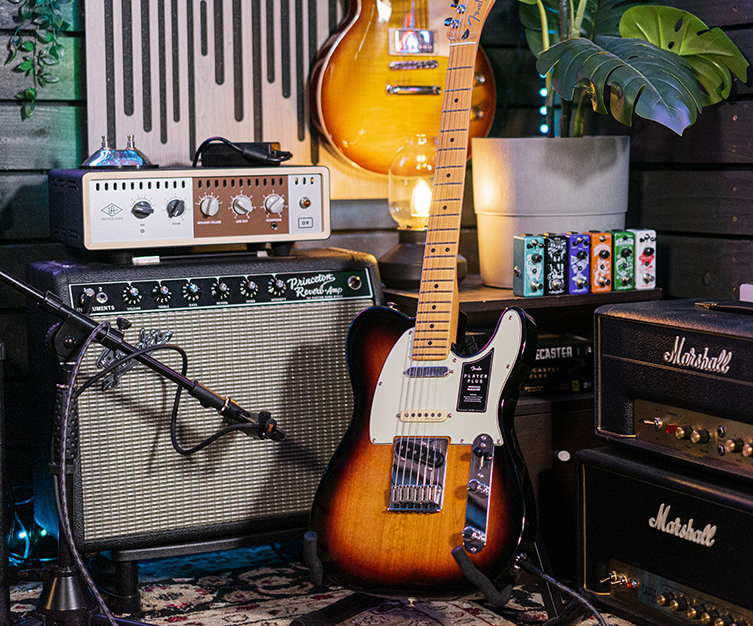
Wherever your space is - bedroom, dining table, garage, dedicated practise space - you need to be able to concentrate on what you’re doing without distractions creeping in. Therefore, a tidy area and a closed door are definitely your friend here!
Now, what do you need for your practise session? Here’s a list:
- Guitar, cable and amp (or whatever you use to hear your sound)
- Tuner
- Metronome
- Selection of plectrums (no single pick can perform all tasks, no matter how much you may have a preference)
- Phone (on silent/aeroplane mode) to record your practise or bring up a reference song etc
- Coffee (obviously)
- Part-specific accessories like a slide, E-Bow, capo etc. Whatever the song you’re learning needs, make sure you have it to hand!
Once you have these things, you should be good to go!
3. Warm Up
It’s a good idea to start with five minutes of stretching and warming up every single time you play. We also know that such a feat is somewhat unrealistic, but when you are sitting down to a dedicated practice session like this - and not just idly jamming - then we think you should work to incorporate a warm up into your regime.
So, what to do?
First, we recommend stretching your hands and we have a good exercise for you. Position your left arm directly in front of you, at right angles to your body so that your arm is straight out from the shoulder. Next, point your fingers towards the floor. Now take your right hand, grab the left hand fingers and pull them back towards your body. You should feel it in the top of your wrist, yeah?
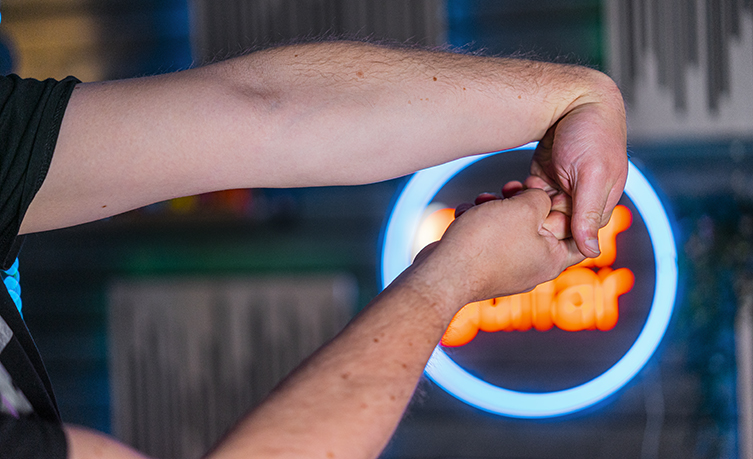
Hold that for thirty seconds, shake your left hand to loosen everything, and then do the same with your left hand turned 180 degrees at the wrist so that it is palm up this time. Pull the fingers back towards your body as before, so that the only difference is your left hand being palmside up rather than palmside down. You’ll now feel the stretch in the palm side of your wrist.
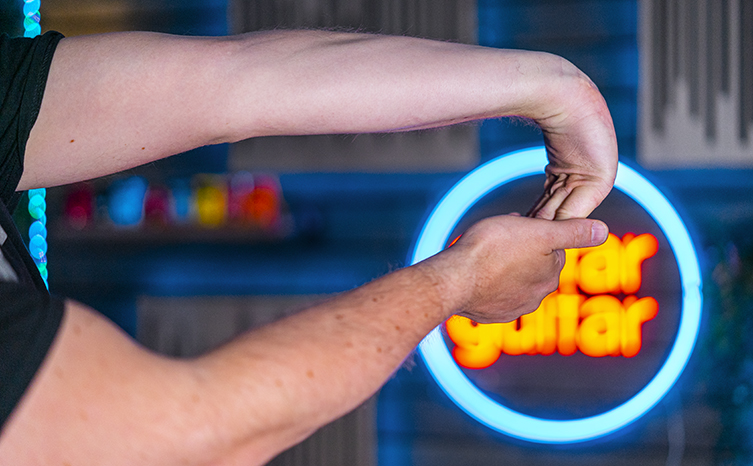
Hold that for 30 seconds, taking care not to hurt yourself, and then shake your hand loose and do this all with your right hand. It’s a great warm up and can help prevent carpal tunnel syndrome.
Now, that’s your pre-warm up stretching done, so grab your guitar now! The next thing is to play some easy chromatic scales (every fret, basically) up and down each string. You can vary the amount of notes you play on each string for variety and extra exercise.
Lastly, form some easy chord shapes and sturm away for a few minutes. By this point, you should be nicely warmed up and ready to practise!
4. Break it Down
So, it’s time to actually get learning! We want quality over quantity here, ok? Nobody wants to hear a sloppy, half-learned piece that only ‘has the good bits’, so don’t fall into that trap! There’s much to be gained from learning a complete piece, not least the level of discipline required.
Are you learning something complicated? Break it down into smaller chunks, even if that means learning a single bar at a time. Repetition is key here, as is being honest about your mistakes: you’ll certainly make them, and that’s fine as long as you use them as context for your focus. Fudging or bluffing certain bits ‘to get the point across’ is going to keep you from sounding your best, so make every note clean and even. If speed is an issue, just forget about it for the time being. You already know that speed is a byproduct of accuracy, and accuracy is something you can absolutely work on. Speed will take care of itself!
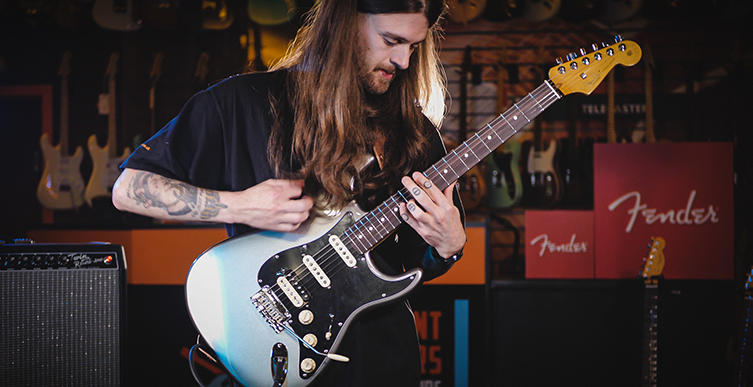
When practising, we think it's a great idea to record yourself and listen back. Just use your phone’s voice memo function: it’s handy and you already own it so just plonk your phone close to wherever the sound is coming from and take a recording. We’re not aiming for Abbey Road levels of production here, just a clear take of audio that allows you to listen critically after and take note of mistakes. It’s quite amazing how many errors and flubs our brains ignore as we focus on the bigger picture. Listening to a recording stops that from happening, and gives us a more accurate assessment of where we are at.
Pay attention to the mistakes and make moves to sort them out, going over them in detail until they are ironed out. There are no short cuts, and every time you cut corners, your audience can hear it! Aim for greatness: after all, what else is there? Mediocrity?
5. Change Things Up
We also recommend having a few different pieces to learn. Now, it’s important not to just bail on a piece when the going gets tough, because if you do that, you’ll never get anywhere. Sticking to a piece until it’s learned is important. BUT! We also acknowledge that, just as a slice of lemon or cucumber can serve as an excellent palate cleanser, so changing up a piece of music can reinvigorate our intentions during a practice session. If you’re working on something super difficult, it could be a fun thing to also have a simple song on standby to learn as a breather. You can always benefit from learning new songs, no matter how complex or straightforward it may be. It diverts your brain and fingers, allowing you to change context for a while, before going back to your initial practice piece. Focus on one piece in particular but have something fun to bounce off: that’s our advice.

6. Log or Measure Your Progress
Taking note of your practise progress is an important part of the procedure. Being able to actually discern how far you’ve travelled and what you have achieved is a great way to reassert positive feelings about your playing.
How do you do this? Well, it could be as simple as crossing off a list of tasks as you complete them, and taking a minute to look at the fully checked-off list. It could be some casually filmed ‘before and after’ videos, with you initially struggling at a part (nobody need see such a video, it’s for your own learning purposes) and then later on acing it like a master. Viewing the struggle and then the triumph will be an awesome moment for you: it’s proof that you can achieve what you set out to do. It’ll also inspire you to try more pieces, perhaps even more tricky or complex ones, since you’ll have proven to yourself that your hard work provides concrete results for your guitar playing.
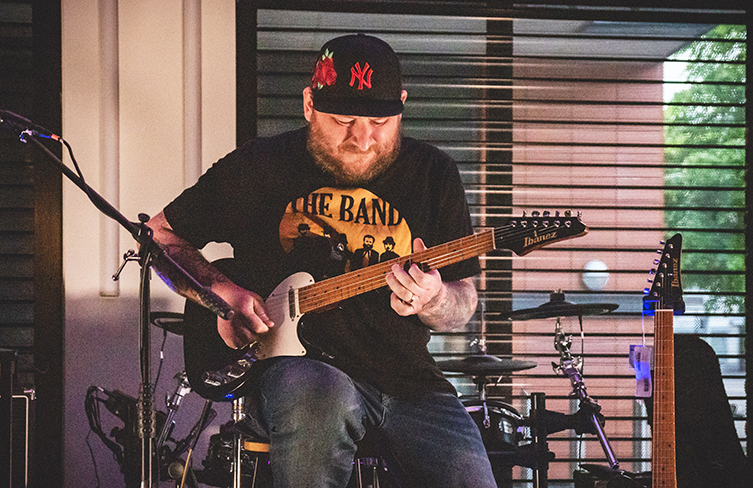
7. A Typical Half Hour Guitar Practise Regime
Let’s say you only have thirty minutes to get a practise session in. It’s simultaneously not very long and plenty of time to get some good work done, so if you can fit in thirty minutes for practise, here’s how to take full advantage of the time…
- 5 mins: stretch & warm up. Play some simple/chromatic scales.
- 10 mins: Practise your main task, taking the correct amount of attention to detail. Get that metronome going!
- 5 mins: Now switch to either a different piece (see above) to change things up, or try learning the chords underneath your main practise part. It’s about changing where your fingers go for five minutes, basically.
- 5 mins: Back to your main practise piece for another focused session. It’s only five minutes, so make them count!
- 5 mins: If you’re making good progress, take five minutes to either play along to the tune you’re learning, or just have some fun making a noise! You’ve earned a few minutes to just have a blast! If, however, you feel like you need more time with the piece you’ve been learning, then these extra minutes could be used to continue your main goal.
It’s a Never Ending Game
We’ve seen today how, in just 30 minutes, we can cover quite a lot of ground. We can complete a dedicated practise session and it has not eaten into our time too much at all! If that’s something that can be achieved even three times a week (every day would be ideal) then the gains will be quite significant.
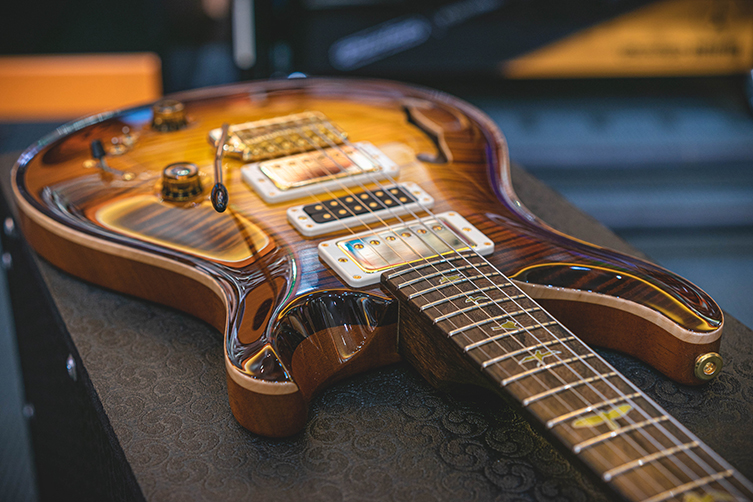
It’s a never ending game, too, because the more diligently you practise, the better you’ll get. The better you get, the more you can accomplish and the more you want to learn! It takes a little bit of dedication and a smattering of discipline, but it’s all worth it! Good luck!


